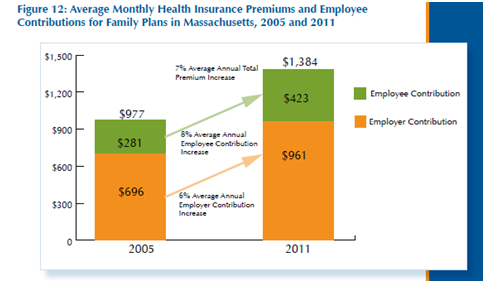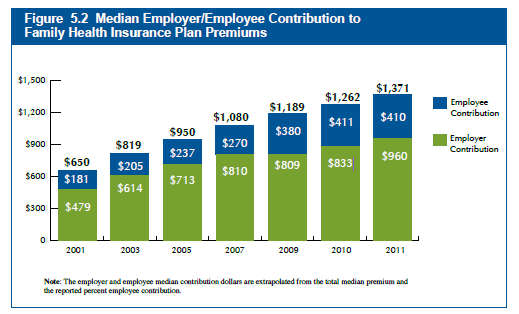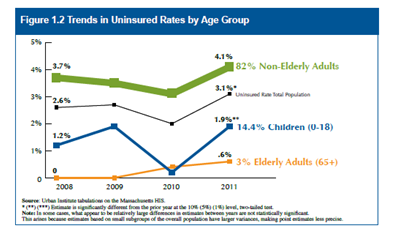5 Takeaways from the Employer Healthcare Survey in Massachusetts
CHIA, the healthcare data agency for the Commonwealth, finally released a very late version of the 2011 employer survey. (The two reports can be found here and here.) Recently I blogged on the data neglect I observed at the agency as they are delivering numerous regular reports late, and questioned if they were ready for even greater responsibility under Chapter 224 (the so-called payment reform and cost control law).
So what can we learn from the latest survey?
I decided to pull a few graphs to illustrate some trends, and provide five takeaways.
1. Increasing Uninsured Rate — We have seen an uptick in the number of uninsured, 3.1% in 2011 when compared to 1.9% in 2010. Could this account for the delay in the report? Probably not, but it makes one wonder what is coming in the next round of employer surveys, and it will be very interesting to watch as the ACA is fully implemented in the state.
2. Profile of the Uninsured — Your typical uninsured person is most likely to be working, making less than 150%FPL, age 26-35, and white. Those making less than 300%FPL comprise 78% of the uninsured, and 60% of the uninsured are white non-Hispanic.It should be noted that national surveys put our uninsured rates closer to 4%, but they have always recorded a slight higher uninsured rate.
These statistics simultaneously speak to the success of the state in enrolling minorities in coverage (who have historically been one of the highest uninsured populations) yet also the remaining challenge in offering affordable insurance to the working poor. Sadly, many of the state policies designed to simplify coverage options and add benefits to insurance have only added to the cost of coverage, and hurt this remaining uninsured population.
3. Big Uptick of Those on Public Insurance – Looks even worse the farther you go back. Many of the coverage gains have come in Medicare and Medicaid. Over 40% of the state budget is now spent on Medicaid, and once the ACA is implemented 25% of the Massachusetts population will be on this broken public program. It is time for an honest conversation about “crowding out” in our state, and a discussion of the ramifications of moving more and more residents off employer sponsored insurance and onto government programs.

4. Erosion of Take Up Rates for Employees —
67% of employees took their employers’ offer of insurance in 2001, 63% in 2003, and now it is down to 50% in 2011.
The report puts it this way, “This could indicate an increase in the proportion of workers who are not eligible for their employer sponsored coverage due to factors such as part-time or contracting status, or new recent hires who are subject to a waiting period before being eligible for coverage.”

I find it hard to believe that waiting periods account for this decrease, especially since it is temporary, but I do wonder if employers are increasingly moving their employees towards part-time work. Numerous media accounts speculate that this will happen significantly under ACA implementation. (Forbes.com, WSJ)
5. The March Toward Higher Premiums Continues – No comment needed.

 Find me on twitter: @josharchambault
Find me on twitter: @josharchambault
What did I miss? What else is important in the report?



